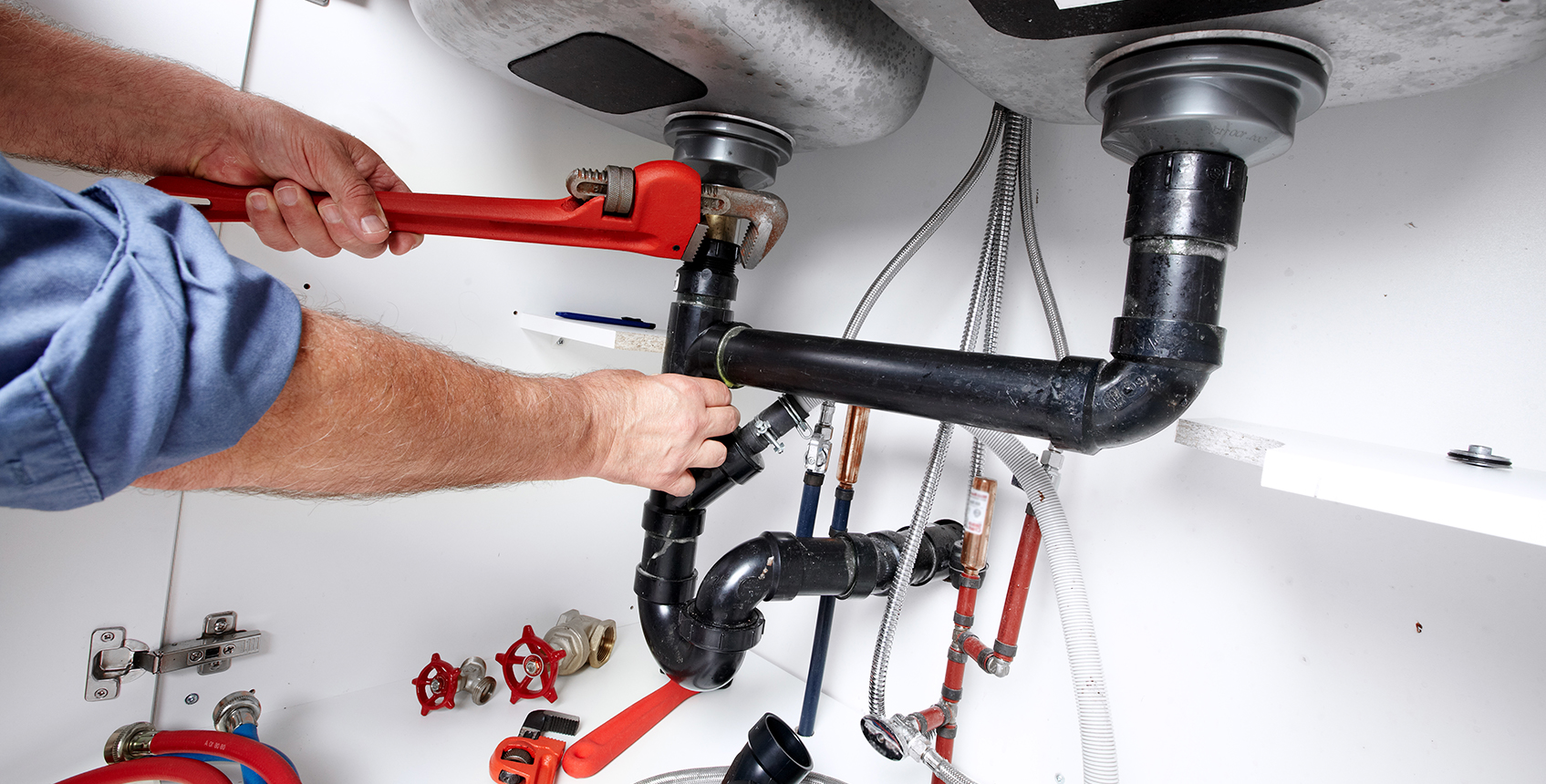What Is a General Contractor and What Do They Do?
/filters:quality(60)/2020-03-06-What-is-a-General-Contractor-CDN.png)
Some home projects are easy for any DIY-er to tackle, but when it’s time to remodel the kitchen or upgrade the master bath, most people need to call a pro. The question is, who do you call?
Home renovation pros have different areas of expertise. A handyman, for example, can switch up your bathroom cabinets or replace the fixtures to give your master bath a facelift. A plumbing subcontractor can install the infrastructure for a new shower or jacuzzi tub to upgrade the room’s functionality. But if you’re completely overhauling the space—changing the layout and adding new elements—a general contractor is the way to go.
What is a general contractor?
A simple general definition for a contractor is someone who coordinates and supervises every aspect of a building or remodeling project. That includes securing the proper permits for the project and hiring, scheduling and overseeing the work of other subcontractors such as carpenters, plumbers and electricians.
Their work goes well beyond managing the hands-on tasks, however. Licensed general contractors take responsibility for the entire worksite which means they carry worker’s compensation and liability insurance. If a worker is injured on the job or your property accidentally damaged, the contractor handles the situation. In short, if something goes wrong, the general contractor is financially responsible for making it right.
The general contractor makes sure that all work is done in a way that doesn’t void any product warranties or guarantees. Qualified professionals must install siding, roofing, windows and major appliances in a particular way or the manufacturer may refuse to honor their guarantee. When a general contractor supervises the project, you know everyone will follow the manufacturer’s guidelines.
Finally, the general contractor is also responsible for securing the workspace and supplies. They handle major projects such as cleaning up and disposing of all trash and debris—and minor but key details such as ensuring workers wear protective foot coverings to safeguard your floors.
Types of contractors
There are two types of general contractors: Traditional and design-build professionals. A traditional general contractor takes project plans designed by someone else, typically an architect or designer, and develops a bid to complete the work.
A design-build contractor is an end-to-end professional that works with you to conceptualize and design the project and then oversee its completion. These contractors usually have in-house architectural and design staff that remain involved throughout the entire process. This is helpful if something unexpected happens during the project that requires a modification in the design.
Licensing requirements and qualifications
Every state has mandatory licensing requirements for general contractors. Contractors must pass a test to qualify, but some states impose additional conditions, such as proof of liability insurance, a tax ID number and proof of business address.
Although general contractors can be licensed with only a high school diploma, many contractors have a degree in construction management, civil engineering or building science. Advanced education is helpful because general contractors need to know different construction methods and materials, how to evaluate and prepare a site, read architectural and design plans and recognize when inspections and permits are necessary to complete a project.
Practical experience is the most important qualification for general contractors. Most of them spend years working as skilled subcontractors, advancing to supervisory roles, before applying for a general contractor’s license. This experience prepares them to estimate costs and completion times, recognize qualified subcontractors, test completed work and control expenses.
When to hire a contractor
No one wants to pay for more expertise than they need, so you shouldn’t hire a general contractor unless you’re tackling a fairly complicated project. A good rule of thumb is if a project can be finished in under a week, a handyman or subcontractor can probably do the job.
On the other hand, if the project will take several weeks to complete and involves permits, inspections and multiple different skilled professionals, you probably need a general contractor.
Think of a major kitchen remodel , for example. Your plans involve knocking down a wall between the kitchen and dining room, swapping your range for a kitchen island with cooktop and wall oven, adding a prep sink, warming drawer and built-in wine refrigerator, upgrading your flooring, installing a bay window and completely revamping your lighting scheme.
You’ll need plumbers, electricians , drywall, tile and window installers, carpenters and painters. You also need to arrange and time the delivery of appliances and supplies so that everyone has the necessary materials for each stage of the project. Finally, your county may require a building permit and plumbing and electrical inspections at various completion points.
Unless you’re an expert in construction methods, project management and your local building regulations—and you have a lot of time on your hands—you need a general contractor to coordinate and supervise all those activities.
/filters:quality(60)/2021-05-10-What-Does-a-General-Contractor-Do-table-rebrand.png)
Contractor vs. subcontractor
It’s easy to confuse contractors and subcontractors, but they have very different skill sets. General contractors oversee the entire project—they take drawings or plans and bring them to life. Your general contractor obtains permits, buys materials, hires and pays construction professionals and secures inspections. Once you approve the plans, your job is essentially done until the project is finished, unless something unexpected comes up.
General contractors hire subcontractors to complete a specific part of the project. Subcontractors usually specialize in a single area such as plumbing, drywall, HVAC, flooring, painting or carpentry. Subcontractors can be self-employed individuals or employees of a subcontracting business.
You as the homeowner typically won’t have any interaction with the subcontractors, since they are hired, supervised and paid by the general contractor. Most general contractors have long-standing relationships with a variety of subcontractors in different construction specialties so they have access to expertise for even highly complex, custom jobs.
Hiring a general contractor
If you decide to hire a general contractor , do your homework. Find out how long the contractor has been in business and if they’ve completed projects like yours; ask to see examples of their work and if you can speak to previous customers. Only work with licensed and insured contractors; check with your local Better Business Bureau to see if there are any outstanding complaints.
Make sure you understand project costs. Some general contractors charge the cost of materials and labor plus 15% to 20%; others bid a flat fee for the entire project. Cost plus a percentage is a more flexible option, but it can be difficult to predict the final total. A flat-fee bid is better if you have a particular budget in mind for your project.
Review your contract carefully to make sure every detail is covered. If something goes wrong and you need to seek legal action against your contractor, your contract supports your case. It should spell out the project schedule, materials and costs, the names of subcontractors used and how work changes will be handled. Keep detailed records of all payments and receipts and take photographs periodically to document progress.
The right professional makes all the difference when you’re ready to fix up your home. If you’re simply tackling your honey-do list, your local handyman can save you time and aggravation. If your home improvement plans involve a major overhaul, a general contractor may be the best way to go.
:max_bytes(150000):strip_icc():format(webp)/male-and-female-construction-workers-discuss-the-building-plans-inside-the-building-site-917936106-223ea95a2bbe42e7a5d172af5cb571d0.jpg)
:max_bytes(150000):strip_icc():format(webp)/home-renovations---tear-out-462647385-4bef14e696b04d6fb46ec3e5137dde90.jpg)
:max_bytes(150000):strip_icc():format(webp)/foreman-discussing-plan-on-laptop-with-tradesmen-at-construction-site-170408963-89c16639bd3841709f00183d03800d7d.jpg)
:max_bytes(150000):strip_icc():format(webp)/construction-worker-examining-blueprints-while-working-at-construction-site--950995342-a8b9a21b617945b996b22e21a595b4ec.jpg)
:max_bytes(150000):strip_icc():format(webp)/quality-conscious-ii-172222046-38f28d89851049eeaff44e179a62c11a.jpg)
:max_bytes(150000):strip_icc():format(webp)/engineers-and-architects-handshake--agreement-and-are-willing-to-work-together--1068877076-081b9d2552f34641a890d6062a589170.jpg)
:max_bytes(150000):strip_icc():format(webp)/sign-here-please--1072035844-1168b2c144484014b50a7f45a0197e7c.jpg)
:max_bytes(150000):strip_icc():format(webp)/couple-and-builder-125142280-16b29d7c3ea74b0eb820e3aa8647f185.jpg)
:max_bytes(150000):strip_icc():format(webp)/man-installing-thermal-roof-insulation-layer---using-mineral-wool-panels--attic-renovation-and-insulation-concept-873936670-3f82751d89c04a1a9bd62c5291515080.jpg)
:max_bytes(150000):strip_icc():format(webp)/HangingDrywall-8aa3cdf963c2450596c4f9a7e56a1505.jpg)

 company.
company.:max_bytes(150000):strip_icc():format(webp)/GettyImages-169270319-5884356e5f9b58bdb3332389.jpg)

